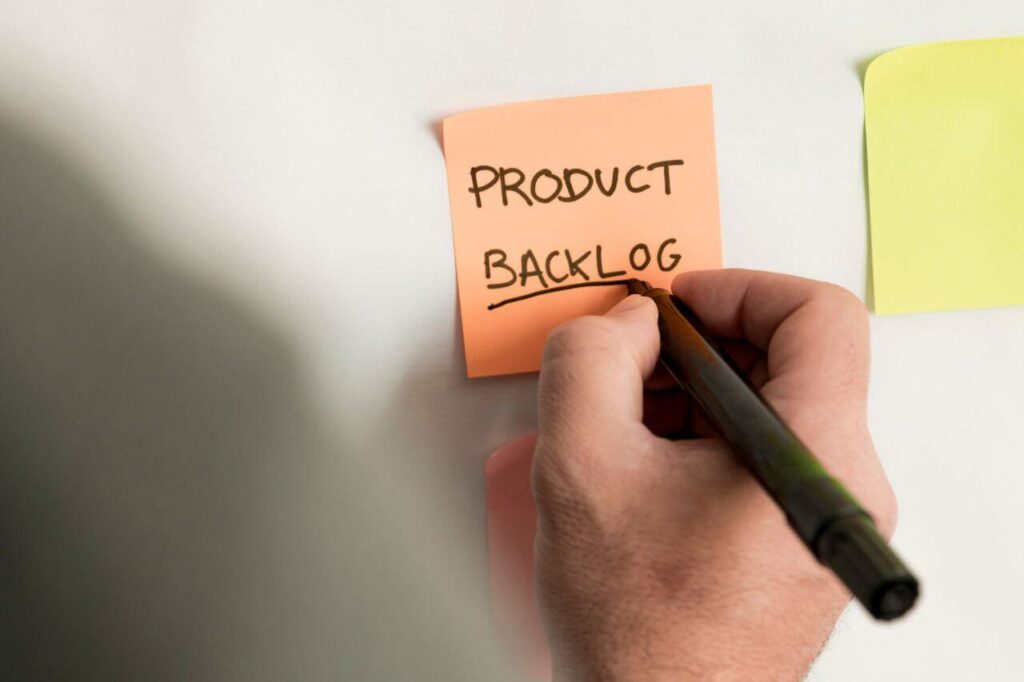One of the goals of the Agile methodology in project management and product development is to make the overall process as simple and uncomplicated as possible while delivering value.
However, there are events and roles in Agile that can easily be mistaken and used interchangeably especially if you’re still learning the ropes of Agile which to be fair is a continuous learning process.
Backlog Grooming and Sprint Planning are key Agile practices that play vital roles in organizing and prioritizing work. While they’re closely related, they serve unique purposes and it’s necessary to differentiate in order to know what’s what and which is which.
This post is a Backlog Grooming vs Sprint Planning head-to-head for you to know the differences between both Agile practices, and how how they contribute to a more efficient and collaborative team environment.
Backlog Grooming vs Sprint Planning: Overview
Backlog Grooming in Agile
What is a Backlog?
A Backlog is a master list of all the work items required to be completed to develop the product and complete the project. It’s a commonly used tool in the Agile methodology for software development
It is used to manage tasks, prioritize work, and ensure that everything the team does is geared towards the project and product goal.
Types of Backlogs
While the Product Backlog happens to be the subject when talking about Backlog Grooming, it’s important to understand that there are different types of Backlogs used in the development process.
These include:
- Product Backlog: This is a Backlog that’s used to manage and prioritize the features and functionality of a product. The Product Backlog which is created and maintained by the Product Owner is used to ensure that the team is working on the most important product features.
- Sprint Backlog: The Sprint Backlog is used to manage the Product Backlog items that are to be completed in a particular Sprint. It’s created during the Sprint Planning event from the Product Backlog and it includes all the tasks that will be created in the Sprint by the Developers.
- Release Backlog: The Release Backlog is used to manage the Product Backlog items that need to be completed for a specific software product release. It’s created and maintained by the Product Owner and it includes the planned release features and functionality.
- Bug Backlog: The Bug Backlog is used to manage identified bugs and issues in the product. It includes all bugs and issues that need to be fixed in the product and is usually managed by the Developers.
- Technical Backlog: The Technical Backlog is a list of all technical tasks to be completed in a software development project. It can include tasks such as upgrading infrastructure, implementing new development tools, or improving code quality.

What is Backlog Grooming?
Backlog grooming, also known as Backlog refinement, is an ongoing process of reviewing, updating, and prioritizing the Product Backlog to ensure that it remains relevant, well-organized, and aligned with the project’s goals.
This is an iterative process in Agile that’s done throughout the Software Development Life Cycle to prepare Backlog items for upcoming sprints.
It involves refining and prioritizing items on a Backlog so that it’s always up-to-date and reflects the current needs and priorities of the project so that the team can work on the most important tasks first.
As new items and tasks are added to the Backlog, they’ll need to be refined and prioritized just like the existing items so the team and project move in the right direction at all times.
What happens during Backlog Grooming?
- Reviewing the Backlog: The first step in Backlog Grooming is to review the entire Backlog and ensure that it’s relevant, up-to-date, organized, and that each item is correctly categorized with a clear description.
- Prioritizing the Backlog: The next activity is the prioritization of the Backlog items based on the project goals, customer needs, and market trends. This should be done by the Product Owner, with the most important Backlog items requiring immediate attention at the top.
- Defining User Stories: User stories are Backlog items that define a product feature from the user’s perspective. As part of Backlog Grooming, it’s important to define the user stories in a way that it’s easy to understand, relevant, and actionable.
- Estimating Effort: After defining the user stories, the Developers should estimate the time and effort required to complete each Backlog item. This helps in Sprint Planning.
- Refining and Splitting User Stories: User stories may be too large and may be split into smaller and more manageable stories during Backlog Grooming.
- Creating Acceptance Criteria: Acceptance criteria are the conditions that must be met for a user story to be considered as complete. Creating acceptance criteria helps the Developers to understand the expected outcomes so that the feature they develop meets the customer’s needs and expectations.
- Re-prioritizing the Backlog: To reflect the current project goals, it’s essential that the Backlog is reviewed and reprioritized regularly to ensure that the team is working on the most important features at all times.
Sprint Planning in Agile
What is Sprint Planning?
Sprint Planning is an Agile event that helps developers plan for the upcoming Sprint. It’s a time-boxed period of one to four weeks where the developers complete a set of items from the Product Backlog.
During Sprint Planning, the team meets to agree on the items from the Product Backlog that will be done during the Sprint, and how they will achieve it.

What happens during Sprint Planning?
The Sprint Planning event typically involves the following activities:
- Review the Product Backlog: The developers review the Product Backlog items, focusing on the ones at the top of the list which has the highest priority.
- Decide the Sprint Goal: During the Sprint Planning event, the developers define a Sprint Goal that’s a short statement describing what they intend to accomplish during the Sprint. This goal should be specific, measurable, achievable, relevant, and time-bound (SMART).
- Estimate Effort: The team also estimates the effort required to complete each item in the Sprint. This helps in providing clarity on how much work they can accomplish within the Sprint realistically.
- Define Tasks: From the selected Product Backlog items, the developers then break done each item into smaller, more manageable tasks in order to understand what needs to be done and assign tasks to team members.
- Commit to the Sprint: Based on the team’s capacity and the estimated effort, the team then commits to completing a set of backlog items during the Sprint.
What is the Objective of Sprint Planning?
The objective of Sprint Planning is to plan and prepare for the upcoming sprint in a structured and efficient through the collaborative effort of the developers and Product Owner.
The objective of Sprint Planning is to answer three important questions.
- Why is the Sprint valuable?
- What can be done in this Sprint?
- How will the work be done?
Collaboration between the Product Owner and Development Team
For Backlog Grooming to be effective, there needs to be close collaboration between the Product Owner and the development team.
While the team members provide their expertise and input to help refine user stories, the product owner must ensure that the Backlog at all times reflects the project’s priorities.
Backlog Grooming Techniques
To conduct successful Backlog Grooming sessions, consider the following techniques:
- Schedule regular grooming sessions to maintain an up-to-date Backlog.
- Keep discussions focused on the user story at hand.
- Encourage open communication and active participation from all team members.

Backlog Grooming vs Sprint Planning: Differences
From the overview of Backlog Grooming and Sprint Planning, it’s pretty clear that they’re both important parts of Agile software development.
However, they serve different purposes and have different objectives. For clarity, these are some of the key differences between Backlog Grooming and Sprint Planning:
1. Purpose
The purpose of Backlog Grooming is all about preparing the Product Backlog for future sprints. Its focus is on ensuring that the Product Backlog is updated, prioritized, and refined so that it’s ready for Sprint Planning.
Sprint Planning on the other hand is about planning for just the upcoming Sprint. The focus here is on selecting items for the Sprint from the refined Product Backlog, defining the Sprint goal, and deciding how to do the work.
2. Frequency
Backlog Grooming is an iterative process that goes on throughout the project. It typically happens once a week or every two weeks and is done within a few hours.
Sprint Planning, on the other hand, happens at the beginning of every Sprint and is time-boxed to four hours for a two-week Sprint, or eight hours for a one-month Sprint.
3. Attendees
Backlog Grooming is typically attended by the Product Owner and the developers, while Sprint Planning is attended by the entire team.
4. Output
The output of the Backlog Grooming process is an updated, refined, and prioritized Product Backlog.
The Sprint Planning output is a Sprint Backlog that includes the Backlog items and tasks to be worked on during the Sprint, a Sprint Goal, and a clear plan for how to get it done.
5. Focus
Backlog Grooming is focused on ensuring that the Product Backlog is ready for the upcoming Sprints, while Sprint Planning is on deciding what will be done in the upcoming Sprint and how it will be done.
Backlog Grooming vs Sprint Planning: Similarities
Although Backlog Grooming and Sprint Planning have different objectives and purposes, they also happen to have similarities between them which include:
1. Collaboration
Backlog Grooming and Sprint Planning are both activities that are done through the collaborative effort of the team.
For Backlog Grooming, the Product Owner and developers work together to ensure that the Product Backlog is refined and ready for upcoming Sprints.
In Sprint Planning, the entire team comes together to plan the work that will be done for the upcoming Sprint and how to go about it.
2. Continuous Improvement
Both activities are focused on continuous improvement in subsequent Sprints to enhance the software development process and deliver a high-quality product.
3. Iterative Process
Although Backlog Grooming happens regularly throughout the project and Sprint Planning is done at the beginning of each Sprint, they’re however both iterative processes that are repeated throughout the project life cycle.
4. Time-Boxed
Backlog Grooming and Sprint Planning are both activities that are time-boxed.
Sprint Planning is time-boxed to four hours for a two-week Sprint and eight hours for a one-month Sprint, while Backlog Grooming doesn’t have a prescribed duration but most teams decide to go for a time-box of 45 minutes to one hour.
5. Focus on Value
Backlog grooming and Sprint Planning both place a strong emphasis on providing value to the customer.
The focus of Backlog Grooming is to ensure that the Product Backlog is prioritized and contains items that will provide the most value at the top of the Backlog.
The focus of Sprint Planning is on selecting items from the Product Backlog that will provide the most value and breaking them down into smaller tasks that can be completed during the upcoming Sprint.
Backlog Refinement during Sprint Planning
The Relationship between Backlog Grooming and Sprint Planning
While Backlog Grooming focuses on maintaining an organized and prioritized Product Backlog, Sprint Planning involves selecting user stories for the upcoming Sprint.
The two practices are closely related, as a well-groomed Backlog makes it easier to plan and execute Sprints effectively.
Incorporating Refined User Stories into the Upcoming Sprint
During Sprint Planning, the team considers the refined user stories from Backlog Grooming sessions.
These stories are more likely to be selected for the Sprint Backlog since they are clear, valuable, and properly prioritized.
Making Adjustments Based on Team Capacity and Priorities
If the team’s capacity changes or new priorities emerge, adjustments can be made to the Sprint Backlog during Sprint Planning.
The team may decide to add or remove user stories to better align with the updated capacity or priorities.
Benefits of Backlog Grooming
Backlog Grooming is a process that has lots of benefits for the team and project in general. These include:
1. Improved Team Productivity
With Backlog Grooming, the Developers are able to work on the important tasks among the backlog items, and always be well-informed about the project’s progress.
This helps reduce the risk of wasting effort and time on tasks that aren’t relevant to their overall goal thus improving team productivity.
2. Improved Planning and Forecasting
Backlog Grooming helps to estimate the time and effort required to complete each backlog item. This way, the Developers can plan and forecast their work better.
3. Higher Quality Software
Backlog Grooming ensures that the backlog items are well-defined and understood by the team. It also ensures that the team works on the most important tasks first.
This helps in reducing the risks of software errors and bugs, thus ensuring software of higher quality.
4. Improved Collaboration and Communication
With proper Backlog Grooming, the entire team is well-informed about the project’s goals and progress toward these goals.
This helps in improved communication and collaboration within the team, better teamwork, and more effective problem-solving as everyone is on the same page.
5. Increased Customer Satisfaction
The dream of customers of a software project is to receive quality software that solves their needs and delivers value.
Developing higher-quality software increases customer satisfaction and can help to improve customer retention and business revenue.
Benefits of Sprint Planning
Sprint Planning is an important event that offers lots of benefits to the team and the development process. Some of the key benefits of Sprint Planning include:
1. Defined Sprint Goal
Sprint Planning helps the team to define a clear Sprint Goal that aligns with the Product Goal.
This goal provides direction for everyone on the team and ensures everyone works towards a collective goal.
2. More Accurate Estimations
With Sprint Planning, the team is able to take time to collectively estimate the effort required for the completion of each Product Backlog item.
This enables them to plan the work to be done better and meet the Sprint Goal.
3. Better Collaboration
Sprint Planning provides an avenue for collaboration between the Product Owner and developers.
By jointly reviewing the Product Backlog and Product Goal together, the Product Owner can provide valuable insights, and the developers can have a clear understanding of what needs to be done.
4. Increased Accountability
During Sprint Planning, The developers assign tasks to themselves that will deliver the Sprint Backlog items, and they make a commitment.
This way, there’s accountability for the work to be done, and this increases the motivation to deliver.
5. Better Time Management
By decomposing the Backlog items into smaller, more manageable pieces, the developers are able to manage their workload and time better to deliver high-quality work that meets the customer’s needs.
Who Attends Backlog Grooming Sessions?
The Backlog Grooming sessions should be attended by anyone involved in the software development process. These include the Product Owner, developers, Scrum Master or Agile Facilitator, and stakeholders.
The Product Owner is responsible for managing the Product Backlog, defining the Product Vision, and prioritizing the product features. Therefore it’s important for the Product owner to be at every Backlog Grooming session.
The developers are responsible for building the product and possess valuable insights into the product’s technical requirements. It’s also essential that they’re at the Backlog Grooming sessions.
Depending on the project, the Scrum Master or Agile Facilitator is required to facilitate the grooming sessions. They’re to ensure the process flows smoothly, and that everyone follows the Agile principles to have a collaborative and productive session.
Also, other relevant stakeholders such as business analysts, designers, and subject matter experts may attend Backlog Grooming sessions to provide valuable input.
Conclusion
Backlog Grooming and Sprint Planning are activities that are crucial to the software development process.
By understanding the similarities and differences between Backlog Grooming and Sprint Planning, you and your team can work more effectively and efficiently.
FAQs
What is one key benefit of a Backlog Refinement Session?
A key benefit of a Backlog Refinement session is that it helps ensure a well-organized and prioritized Product Backlog.
By reviewing and refining user stories, removing ambiguity, and estimating effort, the team can gain clarity on upcoming work, align priorities, and enhance overall productivity and efficiency in project execution.
Is Backlog Grooming Part of Sprint Planning?
Backlog Grooming isn’t technically part of Sprint Planning and is a separate activity although they’re closely related.
Backlog grooming happens regularly throughout the project, while Sprint Planning occurs at the beginning of each sprint.
Is Sprint Planning the same as Backlog Refinement?
No, Sprint Planning isn’t the same as Backlog Refinement. Sprint Planning is done at the beginning of each sprint to plan the work for the upcoming sprint, while Backlog Refinement is an ongoing process of updating and refining the Product backlog.
The output of Backlog Refinement is a refined and prioritized Product Backlog, which is used during Sprint Planning.
What Comes First Sprint Planning or Backlog Grooming?
Backlog Grooming typically comes before Sprint Planning. The goal of Backlog Grooming is to refine the Product Backlog, making it easier for the team to plan their work during Sprint Planning.
It is the refined and prioritized Product Backlog that the team uses to plan its work for the upcoming Sprint.
Is Backlog Grooming a Scrum Ceremony?
While Backlog Grooming isn’t an official Scrum ceremony according to the Scrum Guide, it’s a however key activity in the Scrum process.
It’s a regular activity that takes place throughout the project to keep the Product Backlog up to date, refine user stories, and ensure that the team is working on the most valuable items first.
Does Scrum Master attend Backlog Grooming?
Yes, the Scrum Master typically attends Backlog Grooming sessions. The Scrum Master’s role is to facilitate the meeting and ensure that it stays on track.
They also help the team to remove any roadblocks and ensure that the Product Backlog is up to date and prioritized.
Who Runs Backlog Grooming?
While Backlog Grooming is a team activity, the Product Owner is typically responsible for ensuring that Backlog Grooming happens regularly, and they’re also responsible for ensuring that the Product Backlog is up to date and prioritized.
However, the entire team, including the developers, Scrum Master, and Product Owner, should participate in Backlog Grooming to ensure that the team has a shared understanding of the Product Backlog and the work to be done.
Who Runs Sprint Planning in Agile?
Sprint Planning is a collaborative effort of the entire team, which includes the Product Owner, development team, and Scrum Master.
The Scrum Master facilitates the meeting to ensure that the team is focused on the Sprint goal and that the outcome of the meeting is a well-defined Sprint backlog.
The Product Owner presents the prioritized product backlog, and the Developers estimate the work required to complete the backlog items.
Who is Responsible for Backlog Grooming during the Sprint?
During the Sprint, the entire team, including the Product Owner, development team, and Scrum Master, is responsible for Backlog Grooming.
How Long Should Sprint Planning be?
The duration of Sprint Planning in Agile is time-boxed to four hours for a two-week Sprint and eight hours for a one-month Sprint.
How Long Should Backlog Grooming Take?
While the length of Backlog Grooming depends on the size of the Backlog and the team’s needs, it’s typically recommended that Backlog Grooming sessions are scheduled for about 1-2 hours per week.
It’s important to strike a balance between ensuring the Backlog is updated and refined and not taking up too much time that could be spent on other tasks.





